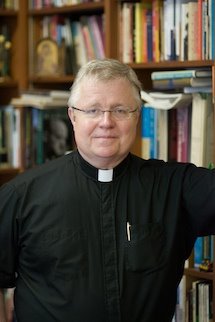We have all witnessed over the past week the end of an astonishing campaign for president. I personally am attracted to both John McCain and Barack Obama, in different ways, and for many reasons. Obama’s election is historic, if only because he will become the first black president of the United States. This alone is something to feel proud about if you are an American. Our country has broken through a barrier that many had thought was unbreakable for decades, if that. So, I smile and feel happy to be part of this great country.
As I look forward, my mind flashes to Jimmy Carter who looks old, Bill Clinton who looks tired, and George Bush who looks much older than when he first started. The job somehow can do that to you. As I listened to Obama speak to the huge crowd in Grant Park, I noticed what might be a different tone in his speech. He seemed a bit subdued and serious at what was a happy occasion. I can only guess what he was feeling at that moment, and my guess is that in that sober speech he was beginning to feel the heaviness of the job ahead.
In one sense one has to say, “Who wants this job?” We have witnessed the greatest financial crisis since the Great Depression whose fallout is going to be enormous. The war in Iraq and Afghanistan remains with over 150,000 troops employed in Iraq. We are still heavily dependent on oil, and Americans still feel it every time we get a home heating bill or fill up our tank. We can talk about health care, climate change, immigration, and the future of social security. The list goes on and on as our auto industry sinks to a new low and US dollars find their way out of this country. It is a hefty list for anyone to tackle.
C.S. Lewis wrote an interesting address entitled The Weight of Glory. Every time I think of this address I also think of the brilliant movie The Unbearable Lightness of Being. In the end, both pieces of work point to the heaviness of responsibility and the demands that are required of people who want to live their life with a deep sense of integrity. Our lives can be poisoned when we seek to avoid the things that need to be done. The same is true with being president of the United States. Jefferson called it “splendid misery”. It is my hope that our next president Barack Obama will not fall prey to the temptations of avoiding the tough issues that face our nation. It is my hope that we as a people will let go of the anger, hatred, and animosity which has come to characterize the partisan nature of politics. I am tired of the endless hate that has spewed over the airwaves.
Let’s take on the weight of glory when it comes to our own citizenship and move beyond the labels of Democrat or Republican, conservative or liberal.
Monday, November 24, 2008
Tuesday, November 4, 2008
Art for a Forgotten Faith

One of the striking aspects of the power of the Judeo-Christian tradition is the art it has spawned through the centuries. I recall being at Chartres Cathedral and being mesmerized by the stained glass and the many subtle and not-so-subtle statuary and architectural design that went into that magnificent place. The same experience can come from hundreds of other cathedrals across the world, one in particular comes to mind which is the Sagrada Familia in Barcelona. It doesn’t take much to see that faith has inspired artists like Chagall, Rembrandt, Matisse, Miró, Dalí, Goya, and countless others. From music to architecture, faith has inspired enormous creativity that moves the human spirit to ever-greater awareness of the beauty and wonder of the Divine in human life.

Today, spirituality and faith do not always seem to be the inspiring engine behind artistic creativity. Art has moved down a secular path. So, when I saw an article recently in the New York Times about an exhibition entitled “NeoHooDoo” at P.S.1 Contemporary Art Center, I was surprised to read that faith once again pops up artistically in unexpected places. In our world today religious art is relegated to museums and, often, religious faith is relegated to a bygone era. I find it refreshing that faith may surface in the art and imagination of young artists who seem to find a spiritual touchstone in aspects of the religious experience. I find this more refreshing than some of the so-called Christian art produced by a wooden imagination locked in the past. As the article said, faith may be not so forgotten after all. There is little question that contemporary art is changing yet again, and in ways that are subtle, yet profound. Put differently, this art moves in a religious way because it asks, “old questions about unanswerables - who are we, who were we, where are we going, what can we be - in slightly new ways, and that’s a start.”

Perhaps our own artistic imagination could use a jump-start, too?
Subscribe to:
Comments (Atom)
.jpg)